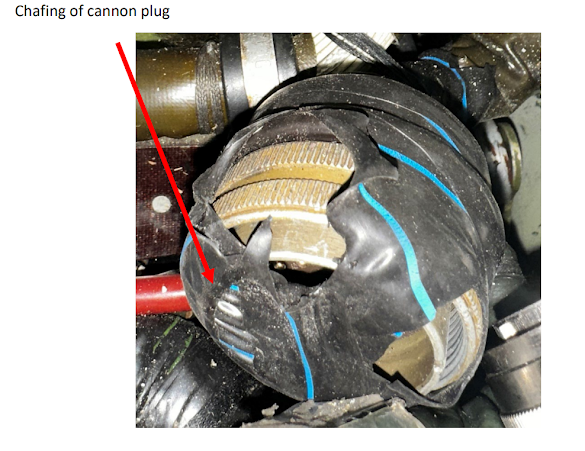- Location: MCAS Cherry Point, North Carolina
- Accident Number: ERA23LA298
- Date & Time: July 12, 2023, 14:00 Local
- Registration: N143EM
- Aircraft: Douglas A-4K
- Aircraft Damage: Substantial
- Defining Event: Runway excursion
- Injuries: 1 Serious
- Flight Conducted Under: Public aircraft
https://data.ntsb.gov/carol-repgen/api/Aviation/ReportMain/GenerateNewestReport/192623/pdf
https://data.ntsb.gov/Docket?ProjectID=192623
On July 12, 2023, about 1400 eastern daylight time, a McDonnell Douglas A-4K, N143EM, was substantially damaged when it was involved in an accident at Cherry Point Marine Corps Air Station (Cunningham Field) Airport (NKT), Cherry Point, North Carolina. The commercial pilot sustained serious injuries. The airplane was operated as a Title 14 Code of Federal Regulations Part 91 public use operation.
The pilot reported that a preflight inspection and flight control checks revealed no anomalies, and the pilot, maintenance personnel, and another pilot confirmed that the airplane was properly configured for takeoff. During the takeoff roll, as the pilot reduced forward stick pressure to rotate the airplane, he felt the nose strut extend; however, the airplane did not rotate. The pilot applied full aft stick and nose-up trim, but the airplane remained on the runway. As the airplane approached the end of the runway, the pilot chose to eject, and subsequently sustained serious injuries during the ejection and subsequent landing under parachute. The airplane departed the runway surface and continued an additional 3,000 ft through the runway overrun area, resulting in substantial damage from the impact and subsequent fire.
Postaccident examination of the airplane’s wreckage revealed that the horizontal stabilizer trim was at 0° (the normal takeoff setting was between 6° and 8° nose up) and the wing flaps were retracted. Examination and operational testing of the horizontal stabilizer actuator and trim components revealed no anomalies. Further examination of the airplane revealed that the front left throttle quadrant air-to-air refueling store control head cannon plug was loose. The cannon plug was resting against the horizontal stabilizer manual override push-pull rod end in a way that could limit operation. The cannon plug also showed evidence of severe chafing consistent with contact with the push-pull rod end. However, it is likely that the airplane’s manual trim override was working normally, since functional tests of both the normal horizontal stabilizer trim and manual trim override were part of the after engine start checks, and the pilot reported no anomalies.
Based on the available information, it could not be determined whether the trim system exhibited a runaway condition or if the pilot inadvertently actuated nose-down trim while holding the stick forward during the takeoff roll, as both situations would have presented the same to the pilot. According to the operator, a runaway nose-down trim condition during the takeoff roll was a known issue in the accident airplane make and model.
Regardless of the reason for the nose-down trim, the pilot should have recognized the airplane’s failure to rotate as a runaway nose-down trim scenario and immediately completed the associated emergency procedure, which included employing the manual trim override. The procedure likely would have resulted in the airplane becoming airborne, and thus preventing the accident.
- Probable Cause: The pilot’s failure to identify and appropriately respond to an anomalous nose-down trim condition during the takeoff roll, which resulted in his decision to eject and the airplane’s subsequent runway excursion.










No comments:
Post a Comment